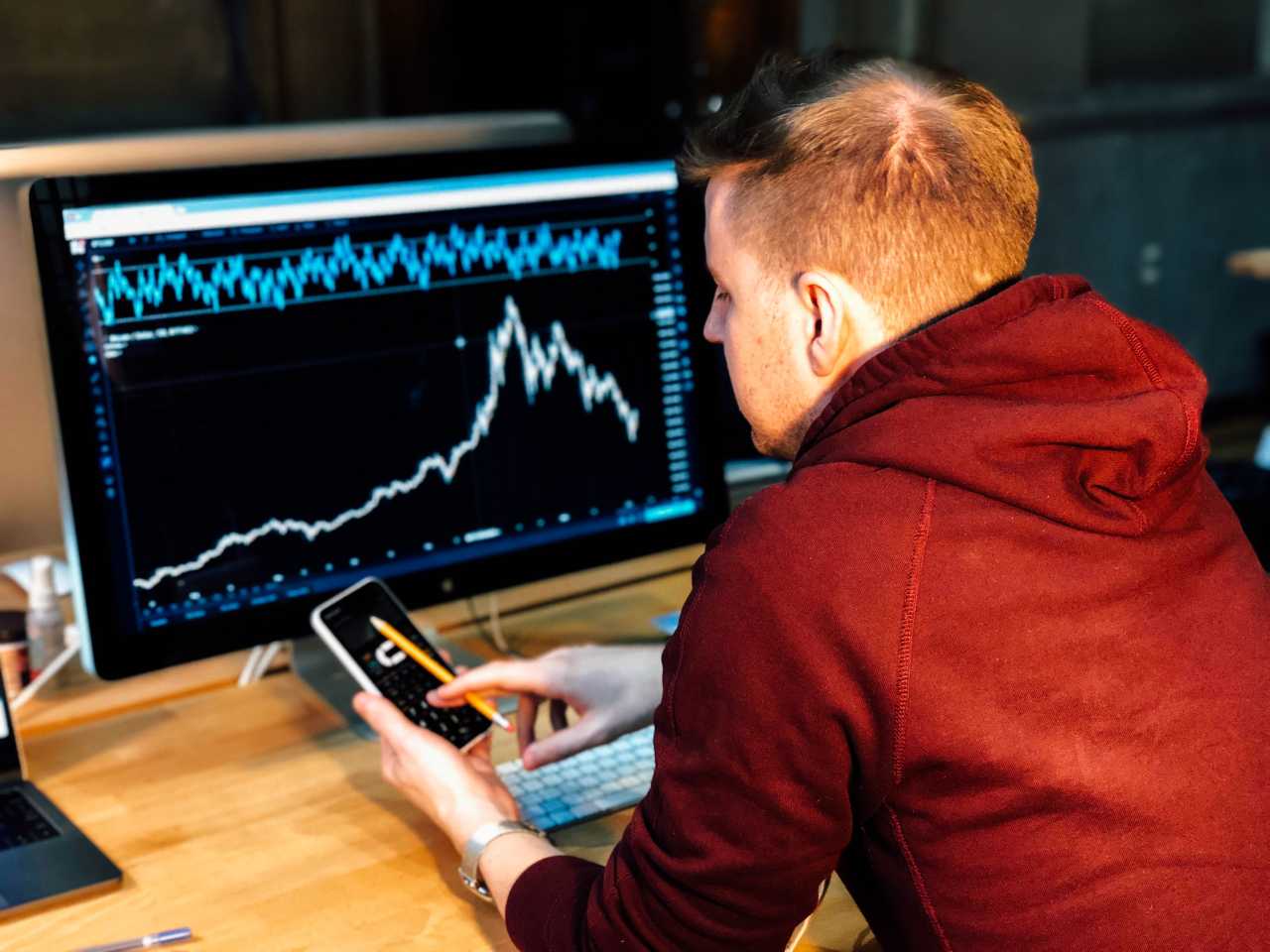FOLLOWQUANT
Data visualization, quantitative strategy, market review, EA real-time trading

What are the most significant features of trading in FOLLOWME community?
Here we selected 1,519,525 trading orders from community users in the first half of 2021 and analyzed the trading behavior of community users through big data.
Filtering while collecting data, this article is mainly for brokers and trading instruments. We only chose gold as a trading instrument because it has the largest trading volume.
Statement: The following is solely based on big data without any personal point of view, which is a collective character, reflecting the average community trading behavior.
- Position holding time and trading order
We divided the orders of community users into three groups according to the length of holding time. The results are as follows:
|
Gold trading data for set broker account |
||
|
Holding time |
Ratio |
Avg. P/L |
|
<1 hr |
60.2% |
0.35 |
|
1-24 hrs |
34.4% |
-4.45 |
|
>24 hrs |
5.4% |
-5.01 |
|
Total |
100.0% |
-1.60 |
There are more than 900,000 orders that have been held for less than one hour, with the overall result profitable. The holding time of an order is proportional to the loss of the order. The longer the holding time, the more losses.
What do these data indicate?
For orders within 1 hour of holding a position, the result is profitable. Does this prove that community users are doing well in short-term trading? In fact, we cannot draw a conclusion based on this data.
1. What affects short-term price fluctuations is volatility
When we randomly observe the price trend in a certain period of time, we can find that the volatile market shows a high probability, and the trend market is only a small probability. As an old saying goes, 70% of the time the market is in volatility, and the remaining 30% of the time is in a trend.
The characteristic of a volatile market is that no matter long or short, place an order, there is a 50% probability of correct guessing. When placing an order, most community users will choose to place it at the support or resistance level of the chart, and will deliberately avoid the fast-rising and fast-declining segments.
However, entry is only the beginning of the trading, which is far from the whole process.
2. The main reason for low profitability
After entering the market, what should a trader do?
We can see that the average profit and loss of orders within one hour is only 0.35 US dollars. Most of the short-term trading users closed the position when they have just made a profit. Users with trading experience will understand that no matter how good the plan is, the moment the order enters the market, there is a high probability that this/her mentality has changed. Human nature is to pursue stability, seek good fortune and avoid harm and is unwilling to take too much risk.
Since most of the time in the market is a volatile market, once the trend returns, the user is likely to immediately close out the position, because after experiencing a loss, seeing the order return to a positive value, is like a survivor. There is no incentive to endure more risks.
This mentality can be well reflected in the user's order behavior, "I will close the position when I get back to the cost".
According to the data, orders held within 1 hour have a small profit on average. It can be summarized as the following two points:
(1) These users have a good timing awareness
(2) Even if you make a mistake, there is a very high probability that you can turn losses into profits in the short term.
3. Weak risk control
If the price trend does not show, how can users deal with it?
The answer given by big data is simple: if the price doesn't come back, just wait for it to come back until you can't wait anymore. We see that the average loss for orders over 1 hour is 4.45$.
In fact, the average value here may be a little false, orders of more than 1 hour are more polarized. Either wait until the market returns and close the position with a minimal profit or keep the loss order and sink into the bottom of the sea with all equity.
Let's make a simple calculation: the average profit of orders within 1 hour is 0.35$, and the loss of orders over 1 hour is 4.45$, that is, at least 13 profitable orders are needed to make up for a losing order. This is a common problem with many trading.
We can see that in the closed orders of many users, almost all of them are profit orders, but in the holding orders, they are almost all losses. What's worse, the holding time of losing trade orders is more than three months. Hence, it is easy to find that once no action is taken for the first time, the follow-up operation pressure is getting higher and higher. The dike of a thousand miles collapsed in an ant nest. A few orders that have been losing money are enough to bring down an account.
In the face of such a result, what is the point of a higher win ratio?
- Trading results and trading hours
We have calculated the profit and loss of user orders at different opening times within 24 hours a day (GMT+8), and the results are as follows.
|
Time (am.) |
Order ratio |
Avg. P/L / lot |
Time (pm.) |
Order ratio |
Avg. P/L / lot |
|
0 |
4.68% |
34.43 |
12 |
1.85% |
17.06 |
|
1 |
3.25% |
-5.64 |
13 |
3.38% |
-25.88 |
|
2 |
2.80% |
-6.41 |
14 |
4.66% |
-0.56 |
|
3 |
1.64% |
-1.91 |
15 |
4.99% |
-4.03 |
|
4 |
1.31% |
-530.63 |
16 |
5.34% |
-1.50 |
|
5 |
0.29% |
-1.76 |
17 |
4.11% |
25.18 |
|
6 |
0.62% |
-209.11 |
18 |
4.10% |
-91.94 |
|
7 |
1.25% |
-49.43 |
19 |
4.84% |
-17.46 |
|
8 |
1.72% |
22.15 |
20 |
8.88% |
-33.30 |
|
9 |
4.08% |
-53.54 |
21 |
12.35% |
-23.24 |
|
10 |
3.23% |
34.87 |
22 |
11.15% |
11.72 |
|
11 |
2.42% |
-1.89 |
23 |
7.07% |
9.44 |
The average loss per lot at 10 pm and 12 am is the largest, but the overall trading volume during this period is not high, mainly due to the influence of a few accounts with larger equity.
From 2 pm to 6 pm is the focus of our research. The reason for this is that these few hours (the North American morning session) are the most active with the most trading order in the market, and some of the more important data are mostly released in these hours.
It is worth noting that the profit and loss of orders opened after 4 pm, 5 pm, and 6 pm is much better than orders opened between 12 pm and 3 pm. The main reason for the poor performance of orders opened at 12 pm and 1 pm is that these orders are easy to be directly affected by expanded volatility after 2 pm or 3 pm (the opening hours of the United States, the market changes greatly), and when the volatility gradually eases, the user's trading performance has improved significantly.
This has been verified in the early data. Most of the early volatility started at 9 am, and user trading performance was relatively poor at this time. In the afternoon when the volatility is relatively moderate, the overall trading results are much better.
Therefore, if there are no good risk control measures, the best choice is to avoid periods of high trading volatility, because once the risk control is not done well, it is likely to be affected.
- The importance of the overall trading system
Although the user’s risk control reflected in the big data is not very well, trading is far from a process that can be solved by setting a stop loss level. Trading is a whole, if the only one-sided stop loss is set for each order, it may also cause a sharp drop in the winning rate of the original entry method. And once the loss is stopped, there will be a series of questions about whether to re-enter the market and how to re-enter the market.
Therefore, when trading, we must look at it as a whole.
It needs to be stated again that the big data here reflects the average trading behavior. We can see that the orders of some users show that the profit order has been held in hand, and the profit is getting higher and higher.
Which transaction method to choose depends on the user's choice. How to build your own system also requires users to improve according to their own conditions.
Disclaimer: The views expressed are solely those of the author and do not represent the official position of Followme. Followme does not take responsibility for the accuracy, completeness, or reliability of the information provided and is not liable for any actions taken based on the content, unless explicitly stated in writing.


Leave Your Message Now